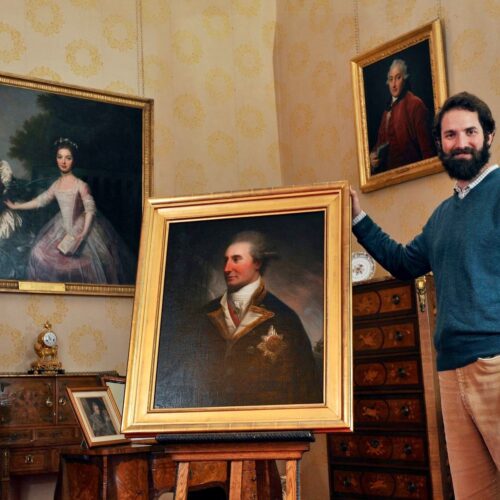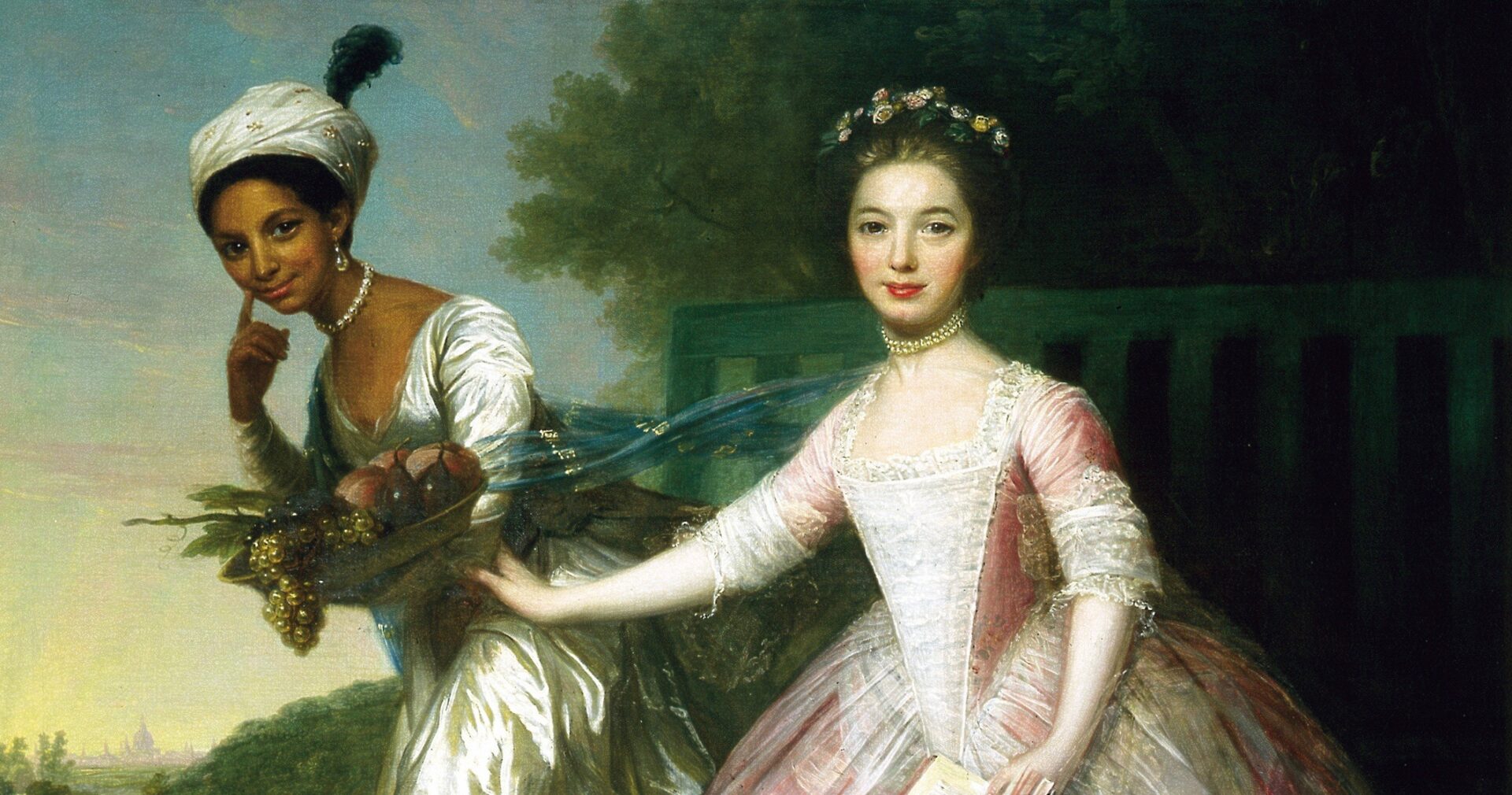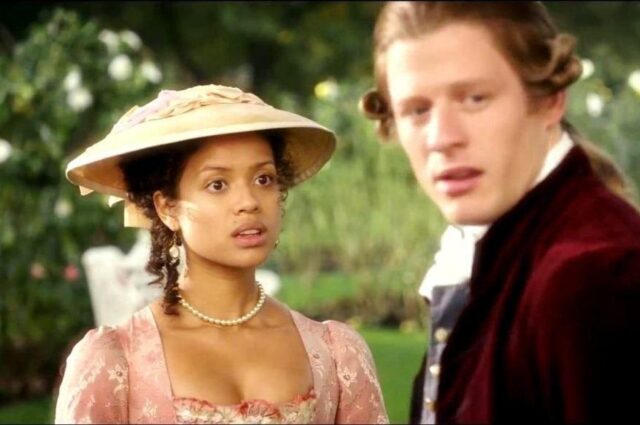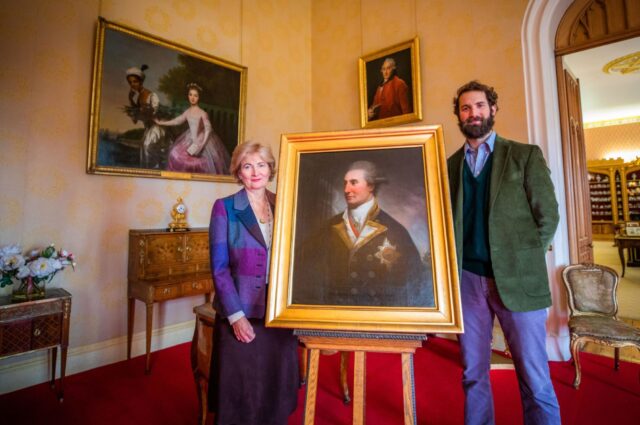Dido Elizabeth Belle
In about 1760 a British naval officer, John Lindsay, captured a Spanish ship in the Caribbean. On board was a Cuban slave, Maria Belle, whom he fell in love with and brought home to London. There they had a daughter, Dido.
Lindsay was the nephew of the First Earl of Mansfield. Owing to his long absences at sea, he entrusted Dido to the childless Mansfields. They gladly took care of her alongside another great-niece, Elizabeth, daughter of the future 2nd Earl whose wife had died young.
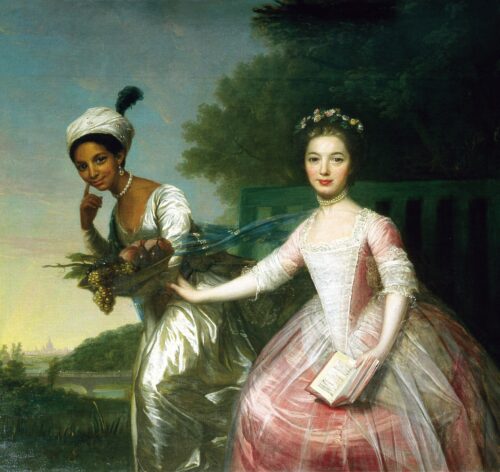
The 1st Earl
Growing up at Kenwood House, London, Dido was well educated and treated as one of the family. Entrusted with supervision of the household’s dairy and poultry, she also sometimes acted as secretary to her great-uncle, the Earl. He was very fond of her and eventually left her £500 in his will.

Love Prevails
Although illegitimacy limited her progress in society, Dido met and married John Davinier, a young man of French extraction, in 1793. The movie Belle (2013) sets the story of their courtship against the backdrop of the Earl’s stance against slavery. Dido and John lived in Pimlico and had three children. She died aged only 43 in 1804.
It has since come to light that John Lindsay remained in close contact with Dido’s mother Maria and eventually settled her in Pensacola, Florida, with her own house and small plot of land. Here she became one of the first free, property-owning, African-American women.
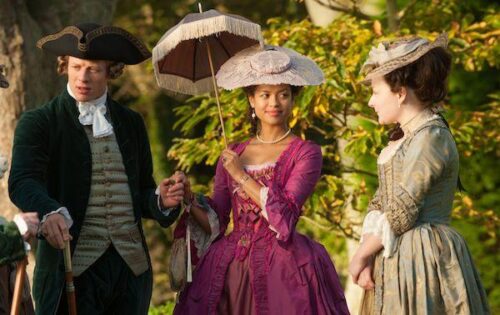
The Artist Revealed, David Martin
The portrait of Dido and Elizabeth was believed until recently to have been painted by Johann Zoffany. But during a visit by the BBC’s Fake or Fortune in 2018 it was discovered to be by the young Scot, David Martin, pupil of Alan Ramsay.
Full of symbolism—the sensuality and exoticism of the New World contrasted with the staid and bookish demeanour of Old Europe—the painting is acknowledged to be one of the first ever to represent a black woman as the social equal of a white one.
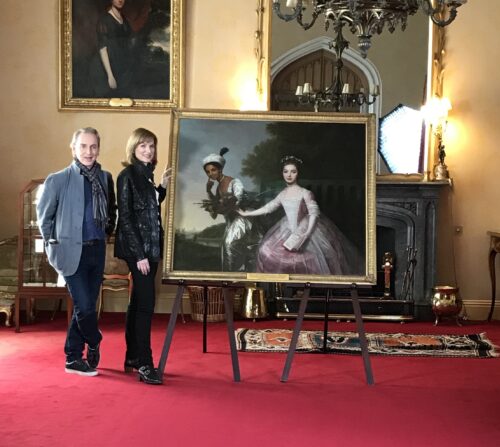
Sir John Lindsay's Portrait
A further mystery was recently solved with the discovery that the unknown naval officer in a portrait that had long been in the Scone Palace collection was none other than Rear Admiral Sir John Lindsay. Now father and daughter are re-united on the walls of the Ambassador’s Room.
